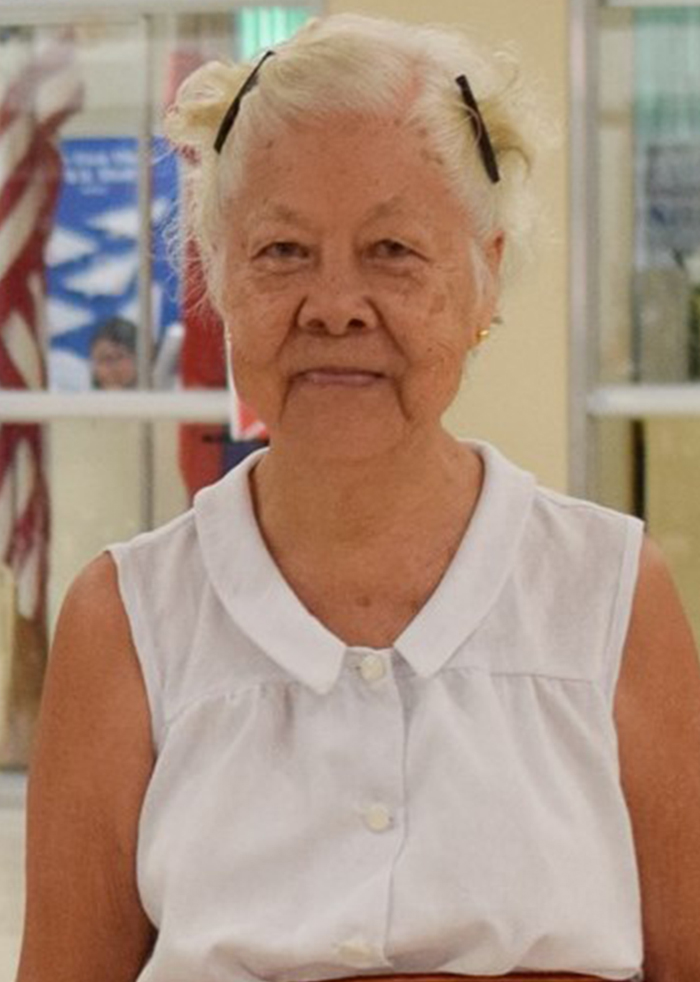
In Commemoration of SUMMC’s 50th year Anniversary Celebration
This message was delivered during the commemoration of the Silliman University Marina Mission Clinic’s 50th Founding Anniversary, May 19, 2023.
I thank the Lord for giving me this opportunity to attend the 50th year of SUMMC and to meet all of you here today. Good morning, “Maayong Buntag sa tanan”!
Let me start with the Philippine scenario 50 years ago so that you will better understand the role of SUMMC or “Marina Clinic” as popularly known.
The Philippine government was very poor as well as its people, particularly those living in the rural areas. Many were sick of common communicable diseases like malnutrition and diarrhea leading to dehydration, pulmonary tuberculosis, pneumonia and neonatal tetanus. The government hospitals were always filled with patients with undermanned personnel. The Rural Health Units (RHUs) were also undermanned, particularly the presence of a doctor. A doctor had to cover 2 or 3 municipalities. Many RHUs have no transportation facilities and the roads to distant barangays were poorly maintained. I remember it took us almost two hours to reach Barangay Mag-aso by jeep from Marina Clinic.
There were only five (5) medical schools, namely: (University of Santo Tomas) UST, (University of the Philippines) UP, (Far Eastern University) FEU, (University of the East) UE in Manila, and (Cebu Institute of Medicine) CIM in Cebu. There were no local specialty trainings, most doctors had to go abroad, to the United States, and finally lived there for good. This [left] the Philippines with [a] scarcity of doctors, most of them found in big cities to practice their profession. Very few would go to the rural communities.
The plan of putting up Marina Clinic to serve the rural communities in Dauin, all along, was God’s plan as I begin to recall now. There was a donor to build Marina Clinic, there was a doctor ready to serve the rural poor and there was a call encouraging all mission hospitals all over the world to serve the poor.
Marina Clinic served as [a] primary health care unit of SU Mission Hospital or Dumaguete Mission Hospital originally. At first, Marina Clinic [had] a 12-bed capacity maternity clinic but quickly evolved into a general clinic to answer the needs of the community. The clinic base would accept patients for admission if the doctor can manage it without being referred to the hospital. Most of the cases admitted were children with severe dehydration and malnutrition that needed IV (intravenous) fluids; simple cases of [pneumonia] and moderate to severely malnourished children for feeding.
To lower the cost of [the] clinic bill when admitted, we asked the family to bring their own food or [to] cook [in] the kitchen [of] the clinic. They also brought their own [bedding] so they can save the salary of a personnel to wash their soiled linens. The family of the patient participated in giving medications because we [did not] have enough personnel to do it. In other words, it was a [form of] self-help for the family to participate in the care of their patient.
At the start, there were only eight (8) of us, the full-time personnel of Marina Clinic: (1) (Medical doctor), (1) nurse, (1) midwife, (2) female aides, (2) male aides, [and] (1) driver. All the clinic staff can do multipurpose taskings to help each other and were trained in basic health education so that they can share with [the] patient’s family while staying at the clinic. The patient’s family members can help cultivate the garden at Marina Clinic for a fee so they can pay the clinic bills, particularly the medicines.
There was no outreach work during their first two (2) years because we were busy with the heavy load of patients admitted for treatment. The only training held at Marina Clinic was the weekly (Barangay Health Workers or BHWs) training and the hilot training. Marina Clinic under (Silliman University Medical Center) was the pioneer in the training of BHWs. Together with the Municipal Health Doctor of Dauin, Marina Clinic trained the first batch of BHWs in 1973 and developed a pilot unit in one of the barangays: Libjo. The trained BHWs worked hand in hand with the RHU midwife. This was instrumental in the release of loans by World Bank to the Department of Health (DOH) for training of BHWs nationwide.
The set-up inside Marina Clinic for admissions of patients served as a model for the provincial government to follow 16 years later. The late Gov. Macias II asked us to help him establish the seven (7) Primary Care [Hospitals] in the hinterlands of Negros Oriental which are now fully supported by the government. We were proud of these two events:
1. As [the] pioneer in the training of BHWs; and
2. Duplication of Marina Clinic set up by the government.
Two years later (in 1974) when we had lesser admissions, we started the outreach work in the distant barangays [of] Dauin not reached by the RHU. We had an agreement with the RHU that we will take those barangays beyond five (5) kilometers away from the municipality. We visited a barangay weekly and would stay there overnight to treat patients and meet the people in the barangay. We just listened to their problems and [followed] what they [wanted] us to do until finally it led to the organization of “Parents Club” in each barangay. Because of their poverty, their felt needs were more food and better income which led us to form an integrated approach to health known as H-A-N-D-E-S (HANDES): H-Health, A-Agriculture, N-Nutrition, D-Community Organizing and Development, E-Environment, [and] S-Spirituality. We trained local leaders for this approach in each barangay that we reached.
Again to lower the cost of health care, we learned to include herbal medicine in the treatment and traditional Chinese medicine including acupuncture, now known as integrative medicine; meaning, the complementary use of Eastern and Western Medicine in healing. Marina Clinic’s evolution in medical extension work in the different barangays showed the following stages:
I. 1933-1960’s – Institution-based Health Program
II. 1970’s – Institution-based Multidisciplinary Program
III. 1980’s – Community-based Multidisciplinary Program
IV. 1990’s – Community-managed Multidisciplinary Program
These stages showed [gradual] hands-on activities from the institution, SUMMC or Marina Clinic, to the people in the community through their people’s organization. The aim is to empower people in the community to make their own decisions about their health and health-related programs and activities for sustainability. Marina Clinic helped the poor by regaining their human dignity. This is the greatest achievement of Marina Clinic in [its] 50 years of existence.
SUMMARY
Marina Clinic found her role in primary health care based on the Philippine scenario 50 years ago through direct consultation and treatment at the out-patient and in-patient care at the Clinic base, training BHWs, and hilot.
Because of our country’s improved economy and better health services in the government, admissions at the Clinic base became lesser and lesser until its admissions were stopped in the ‘90s. The Marina Clinic staff started to do outreach work after two years of just concentrating on curative care at the clinic base.
While in the communities/barangays, Marina Clinic [established]:
a. Barangay Health Center, [where] Clinic consultation and treatment were held. This Barangay Center eventually became their Community Center.
b. People’s organization in each barangay through the HANDES Team approach
[The Marina Clinic also] assisted the Provincial Government in the establishment of the seven (7) units of Primary Health Care Community Hospitals, [and conducted the following special
projects]:
1. HIV/AIDES Education – Youth Peer Educators Training; Established the
Dgte City Council for HIV/AIDS
2. Organization of Women in Prostitution of Dumaguete City
If ever SUMMC will re-open again, one has to study the Philippine situation today still in line with primary health care in order to find the role of SUMMC. We have to depend on God for His will and guidance.
Thank you!



